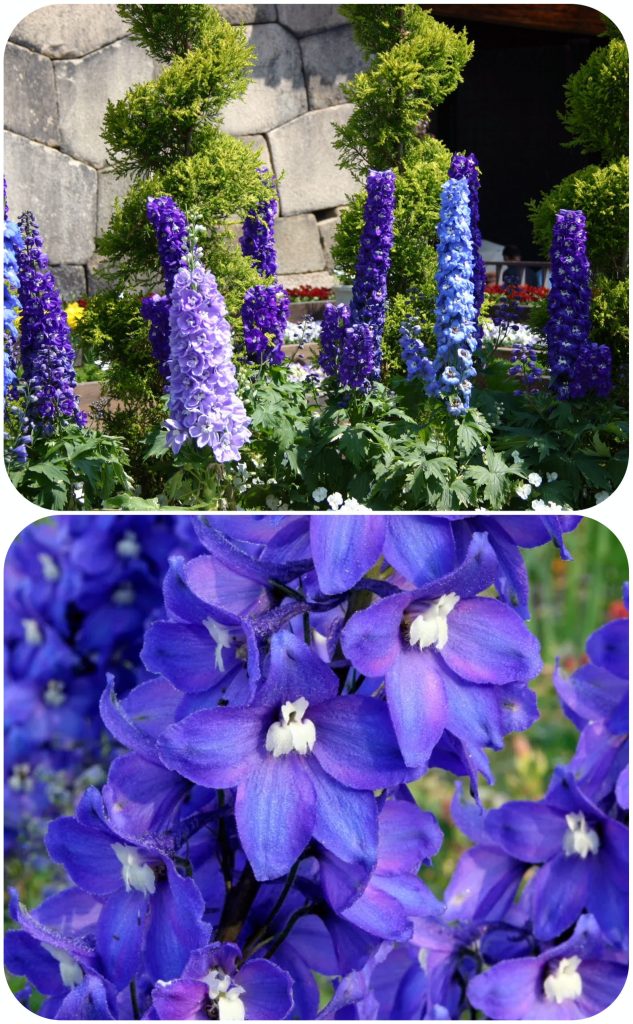
In front of the main gate of Osaka Castle, surrounded by enormous rocks weighing dozens of tons, the magnificent Delphinium flowers are blooming vibrantly. They are of a size that does not pale in comparison to the massive rocks. “Oo-Hiensou” is the Japanese name for this flower, which is generally known as “Delphinium” in English. It is widely distributed in mountainous regions with elevations ranging from 1300 to 2300 meters in the Pyrenees and Alps mountains of Europe, Siberia, Central Asia, southwestern China, as well as cold regions like Siberia and Mongolia. Due to this, they are particularly sensitive to heat, and in hot years like this one, their blooming period is shorter, which is a cause for concern.
The name “Delphinium” is derived from the Greek word “Delphin,” meaning “dolphin,” because the shape of the flower buds resembles a dolphin. In Japan, Delphinium was introduced in the early Meiji period, and the variety that bloomed and spread its light petals resembled the sight of swallows flying in the sky, hence it was named “Oo-Hiensou” (Great Flying Swallow Grass). Delphinium is also cherished as a cut flower in many occasions, and recently, it has been used in wedding ceremonies and funeral altars as well.
一個何十トンもある様な巨岩に囲まれた大阪城大手門の前に、大飛燕草(オオヒエンソウ)が華やかに花を咲かせています。巨岩に見劣りしない大きさです。大飛燕草はもちろん和名で、一般にはデルフィニウムで知られています。ヨーロッパのピレネー山脈からアルプス山脈、シベリア、中央アジアから中国西南部における標高1300~2300mの山岳地帯や、寒地のシベリアからモンゴルなど、主に寒地に広く分布しています。そのせいで、暑さにはめっぽう弱く、今年の様に暑いと花期も短く心配です。デルフィニウムという名前は、ツボミが「イルカ」に似ているところから、ギリシャ語の「デルフィン(イルカ)」にちなんでいます。 日本には、明治時代の初期に渡来し、開花してパッと薄い花びらを広げたデルフィニウムが、ツバメが空を飛ぶ姿に似ていることから「大飛燕草」と名づけられました。デルフィニウムは多くの場面で切り花としても親しまれており、最近では結婚式や葬儀の祭壇などに使われることもあります。
